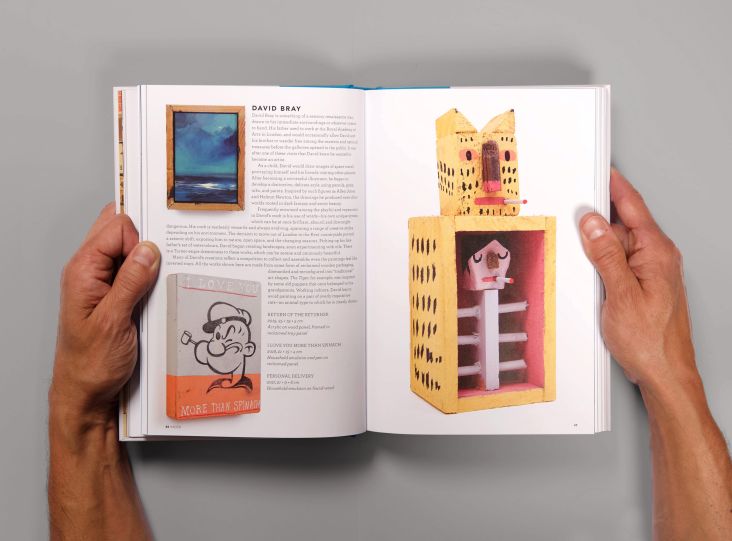Open Circuits: astonishing photography book uncovers the hidden world of everyday electronics
Open Circuits, a recently released book from No Starch Press, delves into the mysterious, microscopic world of everyday electronics by sanding them down and cutting them open to reveal their hidden complexities.
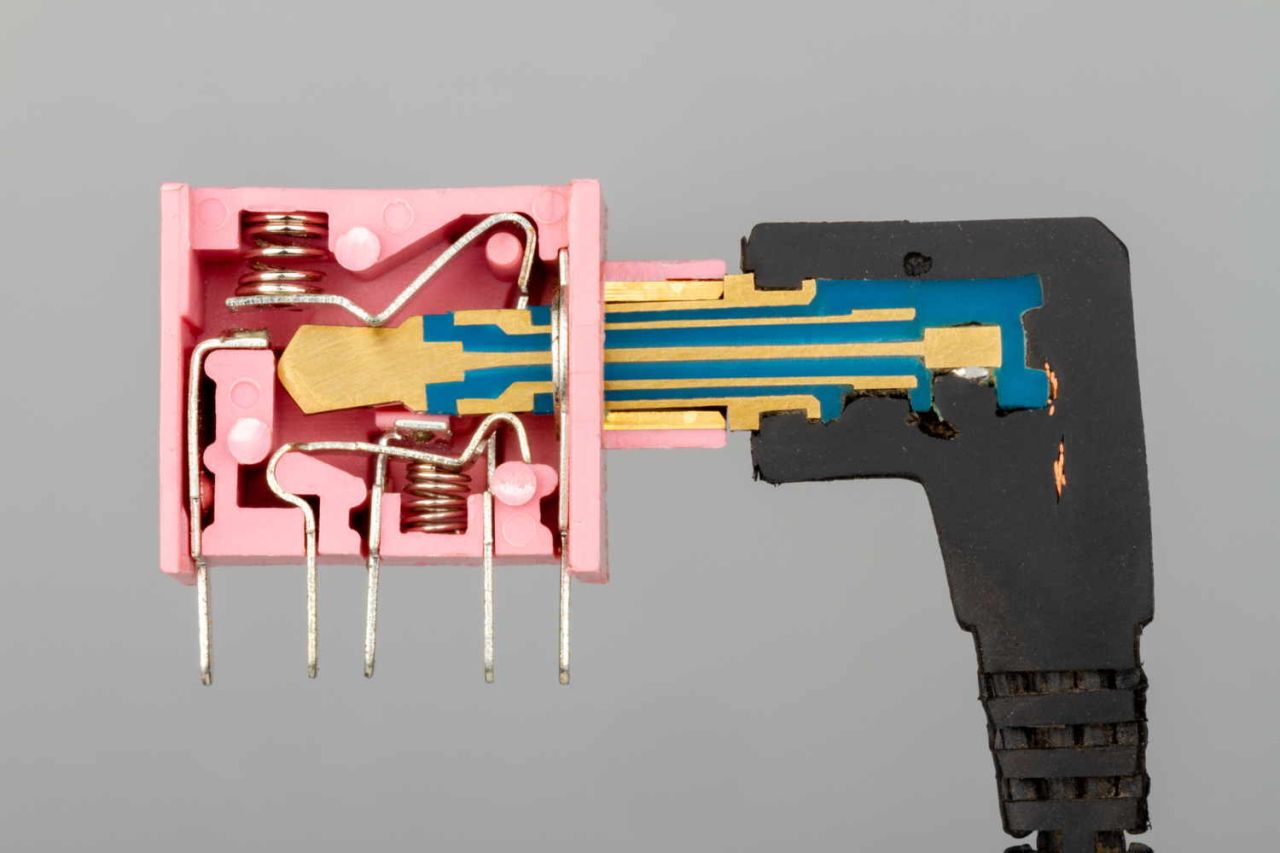
3.5 mm headphone plug and jack in cross section © Open Circuits. Photography by Windell Oskay
Written by Google hardware engineer Eric Schlaepfer and featuring photographs snapped by Windell Oskay, Open Circuits grew from a simple troubleshooting photo Eric took and shared with his followers on Twitter. The image of a broken tantalum capacitor went down a storm with his audience, prompting the pair to wonder if there was more potential in a close-up look at electronic equipment.
This idea grew into a collection of 130 photographs that depict everything from the intricacies of spliced wires in an HDMI cable, the inner workings of a headphone jack, a close-up of a smartphone circuit board, a cross-section of a guitar cable, and much more. Watch the pair explain how the book came about and get a sneak peek at what to expect with the video below.
As you'd expect from such a forensic photographic collection, taking the images was no easy feat. Electronics can be risky to work with at the best of times, and when you start cutting them up and poking around, this danger is only multiplied.
Eric explains on the No Starch blog: "The most challenging was the cathode ray tube (page 186). Windell had the idea to cut it on the slow-speed saw so we could remove the electron gun. I sectioned the glass envelope and the electron gun separately – each took several hours to wet sand.
"The parts were simply too fragile to section any other way. Cleaning the sectioned electron gun was difficult because of the small magnet inside, which vacuumed the debris created during sanding."
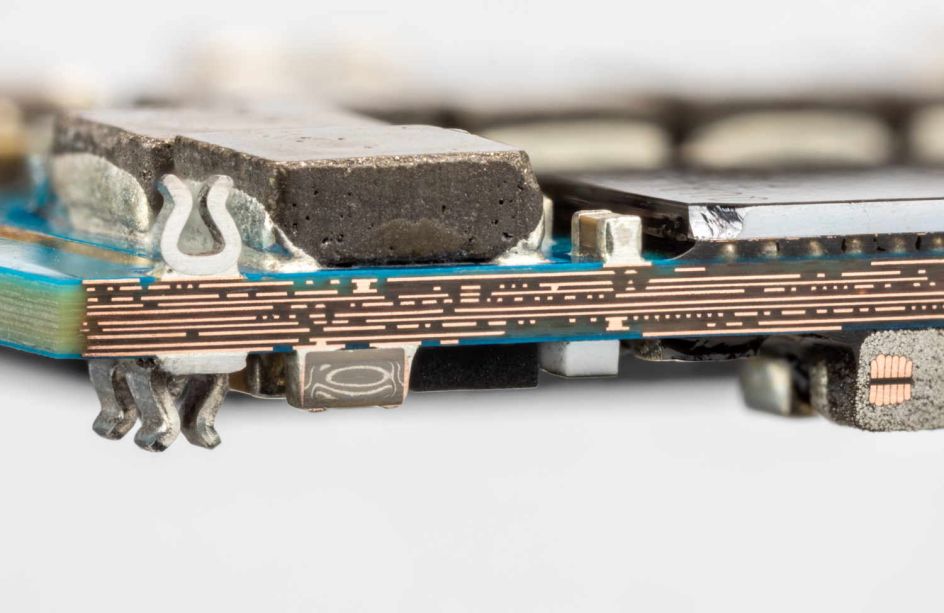
The 10-layer circuit board from a smartphone © Open Circuits. Photography by Windell Oskay

An HDMI cable, with four independently shielded twisted pairs © Open Circuits. Photography by Windell Oskay
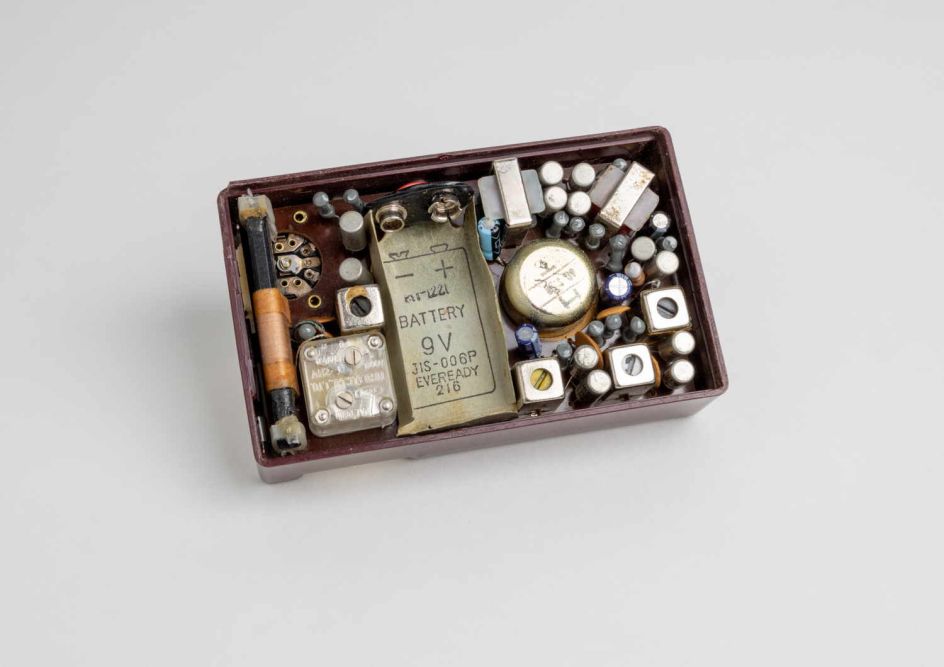
Inside a vintage transistor radio (Outtake) © Open Circuits. Photography by Windell Oskay
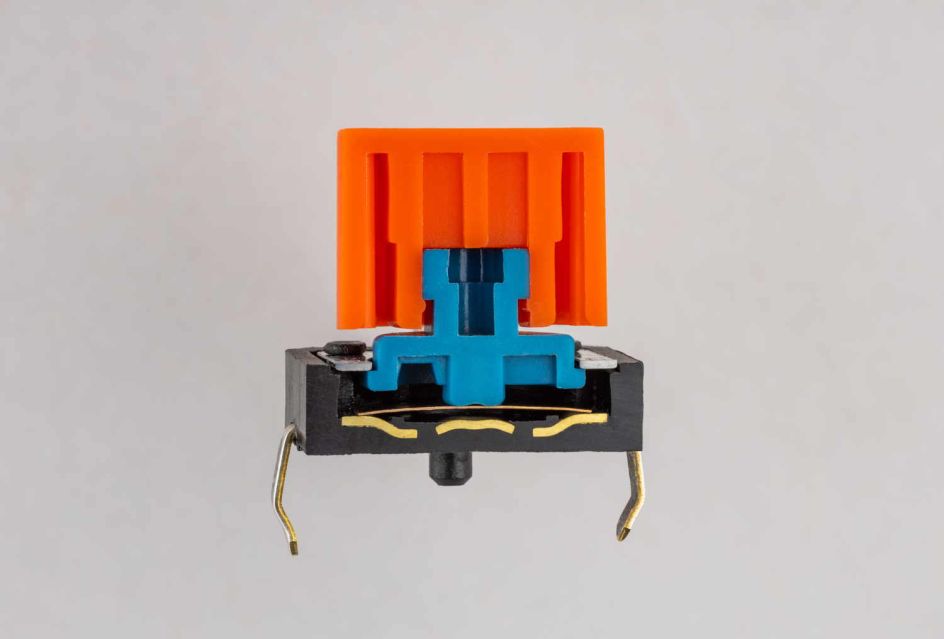
Cross section through a tactile switch © Open Circuits. Photography by Windell Oskay
Even without these risks, the photography itself posed a technical challenge. "One of the basic limitations that you can run into with macro photography is the limited depth of field – only a very narrow slice of the view is in focus at any given time," Windell explains.
"We used focus-stacking software to digitally combine pictures taken at different camera positions, stitching them together like a panorama where the entire subject is sharp and in focus. The circuit-board photograph on the book's front cover was taken this way. Other times, the subject itself can just be plain hard to photograph.
"For some of the LEDs, like the surface-mount LED on page 90, we took photos at different exposure levels and composited them (in a basic HDR—high dynamic range—process) so that you can see detail even in the brightly lit LED. For the colour sensor on page 81, the photos came out drab until we added an additional light source at just the right position and brightness so that you could see the additional reflection."
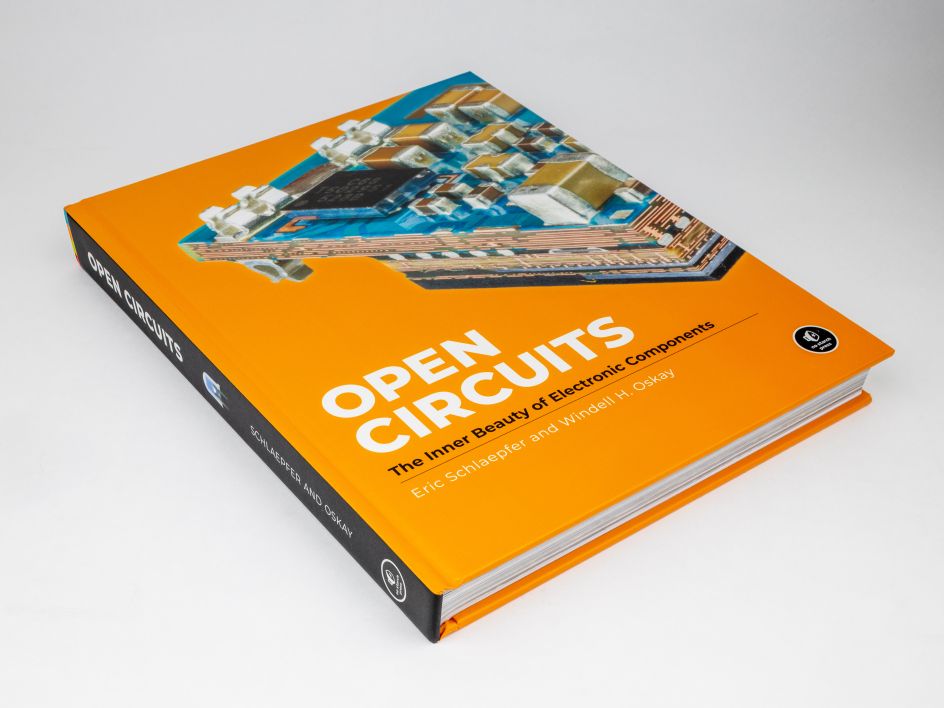
Open Circuits, the book
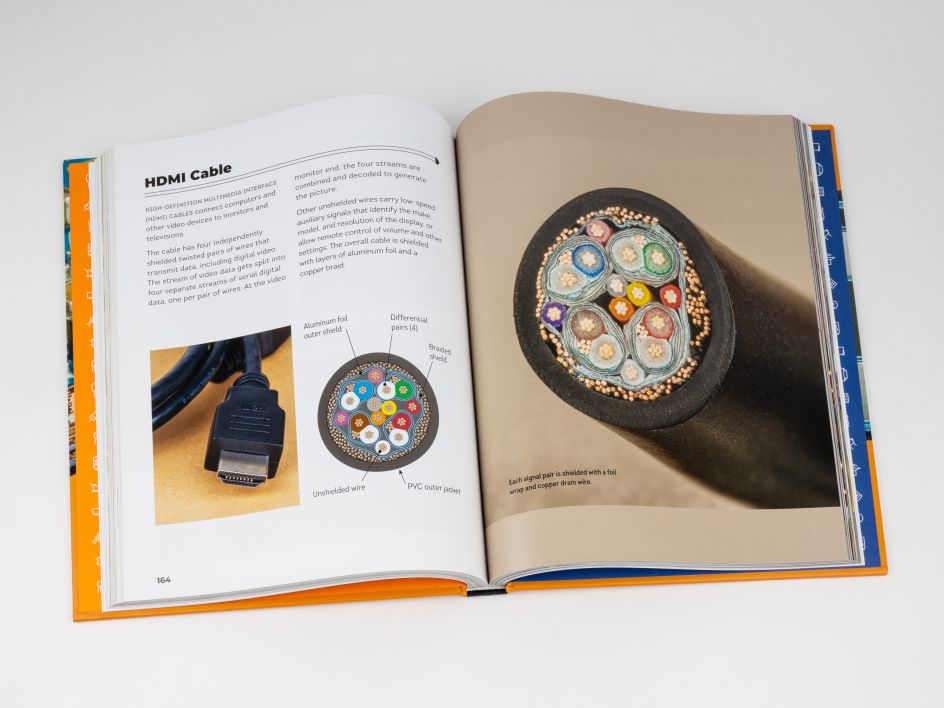
Open Circuits, the book
Curiously enough, the pair are no strangers to these intricate levels of technological working. But that still doesn't mean there weren't surprises in store while compiling the book. "We thought an RGB LED would look cool, but after cutting into one, it just didn't really seem interesting," says Eric. "We took apart a boring-looking grey electronics module that turned out to be a fabulously complex jewel – the isolation amplifier (page 266)."
Windell adds: "One of my favourites that took some experimentation was the multi-layer ceramic capacitor (page 36). There's never been any mystery about what is in one – stacked layers of metal electrodes – but it took us a lot of experimentation and cutting into different capacitors to find one where you could literally see and count the individual layers.
"There were definitely real surprises along the way. The way that the rocker DIP switch (page 110) works inside is just stunning elegance."
To uncover all of the surprises in its pages, order your copy of Open Circuits: The Inner Beauty of Electronic Components from the No Starch Press site for $39.99.









](https://www.creativeboom.com/upload/articles/86/862919952c0ad18439004228895a431dc6e45ffc_732.jpg)





